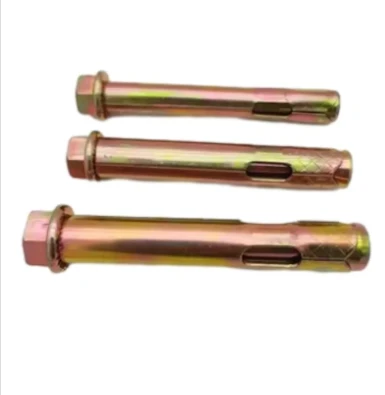Nov . 20, 2024 01:34 Back to list
hex lock nut
Understanding Hex Lock Nuts A Comprehensive Guide
Hex lock nuts play a vital role in fastening applications across various industries. Their design, functionality, and materials make them a favored choice among engineers and technicians for ensuring secure and reliable connections. This article delves into the features, benefits, applications, and installation techniques of hex lock nuts, providing a clear understanding for anyone interested in the subject.
The Basic Design
Hex lock nuts are hexagonal-shaped nuts that are typically made from steel, stainless steel, or other durable materials. They can be recognized by their distinctive features, including a serrated or nylon insert that prevents loosening under vibrations or dynamic loads. While standard nuts may loosen over time, hex lock nuts maintain their grip, making them essential in applications where safety and reliability are paramount.
Types of Hex Lock Nuts
There are several types of hex lock nuts designed to cater to specific needs
1. Nylon Insert Lock Nuts These nuts have a nylon component embedded in the threads. When the nut is tightened onto a bolt, the nylon grips the threads, preventing movement. This type is often used in applications where the vibration levels are moderate.
2. Serrated Flange Lock Nuts Unlike the standard hex nut, these have serrations on the flange that dig into the surface of the material beneath them, providing a better grip. These are ideal for applications where a strong connection is required.
3. All-Metal Lock Nuts Made entirely of metal, these nuts are designed for high-temperature or high-stress applications. They do not use any non-metal components, which can fail under extreme conditions.
4. Castle Nuts Often used in automotive and machinery applications, castle nuts have slots that fit over a cotter pin, providing additional security against loosening.
Benefits of Hex Lock Nuts
The advantages of hex lock nuts are numerous and depend extensively on their application. Some key benefits include
- Vibration Resistance The primary feature of hex lock nuts is their ability to resist loosening due to vibrations. This is crucial in machinery, automotive, and aerospace applications where performance and safety are critical.
- Easy Installation They can be easily installed using standard tools, making them user-friendly for technicians and engineers.
- Cost-Effectiveness Compared to other locking mechanisms, hex lock nuts are often more affordable and provide excellent performance, making them a cost-effective solution
.hex lock nut

- Versatility Hex lock nuts come in various sizes and materials, allowing them to be used in a wide range of applications, from construction to automotive and beyond.
Applications
Hex lock nuts have found their way into numerous industries due to their reliability and robustness. Common applications include
- Automotive Used in securing wheels, suspension components, and engine parts, hex lock nuts maintain integrity under dynamic loads faced during driving.
- Construction In buildings and bridges, these nuts are used to secure beams, frames, and various structural components, ensuring long-lasting stability.
- Aerospace The aviation industry demands high-quality fasteners, and hex lock nuts meet these needs through strict adherence to safety and performance standards.
- Machinery and Equipment In manufacturing and heavy machinery, hex lock nuts are essential for assembling parts that undergo substantial mechanical stress and movement.
Installation Best Practices
To ensure optimal performance from hex lock nuts, proper installation techniques should be followed
1. Clean Threads Ensure that both the bolt and nut threads are clean and free of debris, as dirt can impede the locking mechanism.
2. Torque Specifications Always adhere to the manufacturer’s torque specifications to achieve the desired fastening force without over-tightening, which can lead to stripping threads.
3. Check for Vibration In high-vibration environments, periodic inspection of the nut tightness is recommended to ensure continued integrity.
4. Use of Appropriate Tools Use appropriate wrenches and fasteners when installing hex lock nuts to avoid damage.
Conclusion
Hex lock nuts are essential components in various applications, providing security and stability in fastening mechanisms. Their unique design and variety make them suitable for a wide range of industries, from automotive to aerospace and construction. Understanding their features and proper installation ensures that they perform effectively, enhancing the overall safety and reliability of assembled systems. As technology continues to evolve, the demand for high-quality fastening solutions like hex lock nuts will inevitably increase, underscoring their importance in modern engineering and manufacturing practices.


